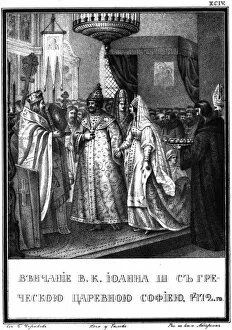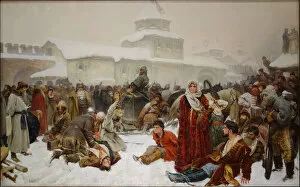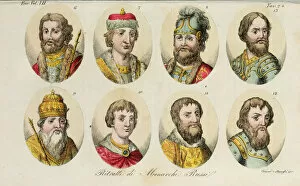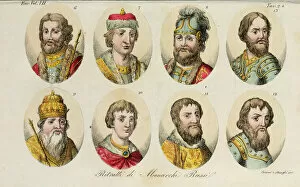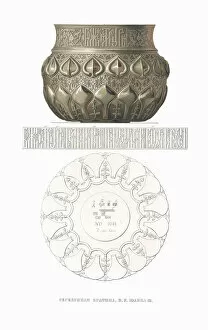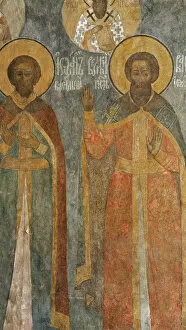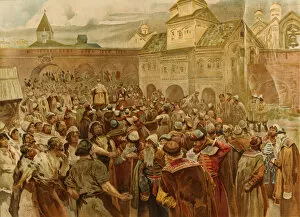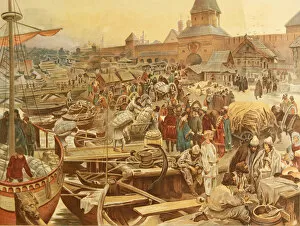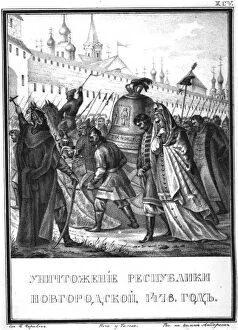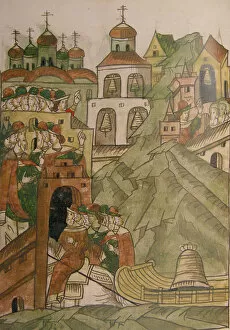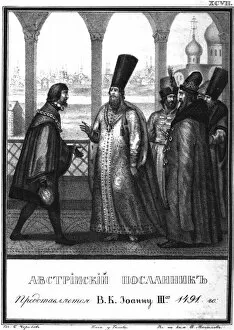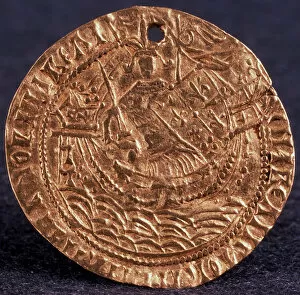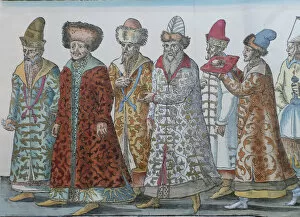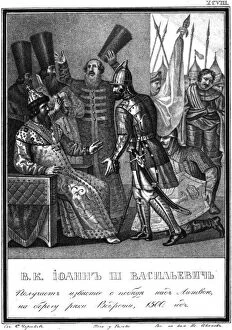Ivan Vasilevich Collection
Ivan Vasilevich, also known as Ivan III, was a prominent figure in Russian history
For sale as Licensed Images
Choose your image, Select your licence and Download the media
Ivan Vasilevich, also known as Ivan III, was a prominent figure in Russian history. He played a crucial role in shaping the nation and its monarchy during the 15th century. One of his notable achievements was his marriage to Sophia Palaiologina, which took place in 1472. This union symbolized the connection between Russia and Byzantium, bringing cultural influences from both empires. During his reign, Ivan III witnessed significant events such as the Fall of Novgorod. This event marked the decline of Novgorod Republic's independence and its integration into Moscow's growing power. Ivan III belonged to a lineage that included influential rulers like Yaroslav, Sviatoslav II, Sviatopolk, Vladimir Monomakh, Yuri I, Dmitry Donskoy - all playing their part in shaping Russian history. The grand princes' portraits depict their regal presence and authority over their realm. These images provide us with glimpses into the past and allow us to understand how they were perceived by artists at that time. In addition to political affairs, Ivan III had an appreciation for artistry and craftsmanship. Drinking vessels like those used by Tsar Ivan III showcased intricate designs reflecting the opulence of his court. Another remarkable artifact associated with him is the Bratina or ceremonial drinking cup. It represents not only luxury but also traditions deeply rooted in Russian culture. Perhaps one of the most iconic symbols linked to Ivan III is his ivory throne. This magnificent piece exemplifies his status as a powerful ruler who commanded respect throughout his kingdom. Novgorod Harbor served as an important trade hub during this era when commerce flourished under Ivan's rule. The harbor bustled with activity as merchants brought goods from distant lands while contributing to economic growth. However, despite these accomplishments and advancements made under Ivan's leadership, there were challenges faced by Novgorod Republic leading up to its fall in 1478.

